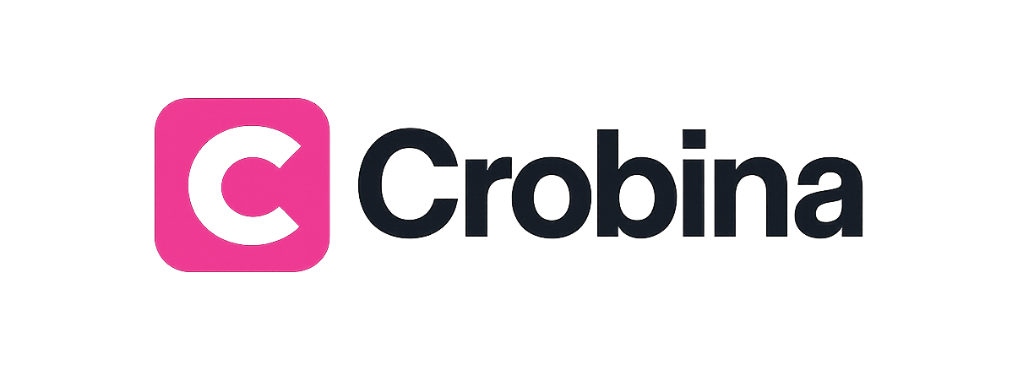Precision work demands exceptional vision. Magnification tools bridge the gap between what the naked eye can see and the intricate details that define quality craftsmanship.
🔬 The Revolution of Seeing Beyond Natural Limits
Throughout human history, our quest to see smaller has driven remarkable innovations. From the earliest magnifying glasses to sophisticated digital microscopes, magnification technology has transformed countless industries. What once required guesswork now benefits from crystal-clear visibility, enabling professionals and hobbyists alike to achieve unprecedented levels of precision.
The modern landscape of magnification tools extends far beyond traditional microscopes. Today’s technology encompasses handheld digital devices, USB-connected cameras, smartphone-compatible lenses, and specialized equipment designed for specific applications. This diversity ensures that whether you’re inspecting circuit boards, examining jewelry, analyzing biological specimens, or pursuing artistic endeavors, there’s a magnification solution tailored to your needs.
Understanding the power of magnification begins with recognizing its fundamental impact on quality control, education, research, and creative work. When details become visible, possibilities multiply exponentially.
Understanding Magnification: The Science Behind Clearer Vision
Magnification refers to the process of enlarging the appearance of objects through optical or digital means. The magnification power is typically expressed as a ratio or multiplication factor—for instance, 10x means the object appears ten times larger than its actual size when viewed with the naked eye.
Optical magnification uses lenses to bend light rays, creating enlarged images through physical principles. This traditional approach provides real-time, natural viewing without screen latency or digital artifacts. Digital magnification, conversely, captures images through sensors and displays them on screens, allowing for image capture, measurement tools, and enhancement features.
Key Magnification Specifications That Matter
When selecting magnification tools, several technical specifications directly impact performance and suitability for different tasks:
- Magnification range: The spectrum of enlargement available, from minimal zoom to maximum power
- Working distance: The space between the lens and the object being examined
- Field of view: The visible area at a given magnification level
- Resolution: The clarity and detail reproduction capability
- Depth of field: The thickness of the plane that remains in sharp focus
- Illumination quality: The type and effectiveness of built-in lighting
These factors work together to determine whether a magnification tool suits specific applications. Higher magnification isn’t always better—it reduces field of view and working distance, which can complicate certain tasks.
🛠️ Categories of Magnification Tools for Professional Applications
Handheld Magnifiers and Loupes
These portable solutions offer convenience for quick inspections and fieldwork. Jewelry loupes typically provide 10x to 20x magnification, perfect for gemstone evaluation and detailed metalwork. Pocket magnifiers serve general purposes, from reading fine print to nature observation. LED-equipped models enhance visibility in low-light conditions.
Professional watchmakers and jewelers often prefer loupe magnification because it maintains natural color accuracy and requires no power source. The hands-free design of head-mounted loupes allows both hands to remain available for delicate manipulations.
Stereo Microscopes: The Workbench Essential
Stereo microscopes provide three-dimensional viewing through dual optical paths, making them ideal for assembly work, dissection, quality inspection, and any task requiring depth perception. Magnification typically ranges from 7x to 45x, with some models extending to 90x or beyond.
These instruments excel in electronics repair, biological specimen preparation, forensic analysis, and industrial quality control. The ability to work directly under the microscope while maintaining hand-eye coordination makes stereo microscopes indispensable in manufacturing environments.
Digital USB Microscopes: Modern Versatility
USB digital microscopes have revolutionized accessibility to magnification technology. Connecting directly to computers or smartphones, these devices display magnified images on screens while often including measurement software, image capture capabilities, and video recording functions.
Magnification ranges vary widely, from 20x to over 1000x in advanced models. Built-in LED illumination ensures consistent lighting, while adjustable stands provide stability. These tools have become popular for PCB inspection, skin analysis, textile examination, coin collecting, and educational demonstrations.
Smartphone Magnification Solutions
The ubiquity of smartphones has spawned an entire category of clip-on microscope lenses and dedicated microscope attachments. These portable solutions transform your phone into a capable magnification device, leveraging the camera’s imaging capabilities.
Applications designed for microscopy enhance functionality with measurement tools, lighting control, and image processing. These solutions appeal to educators, field researchers, hobbyists, and professionals who value portability and immediate sharing capabilities.
Industry-Specific Applications Transforming Professional Work
Electronics and PCB Inspection 🔌
Modern electronics feature increasingly miniaturized components requiring magnification for proper inspection, repair, and quality assurance. Solder joints barely visible to the naked eye can be thoroughly examined for cold joints, bridges, and proper wetting. Component identification becomes straightforward when markings too small for natural vision become clearly legible.
Digital microscopes with measurement capabilities enable precise documentation of defects and dimensions. The ability to capture images facilitates communication between technicians and provides records for quality management systems. Many repair professionals consider digital magnification tools as essential as soldering irons in their workbenches.
Jewelry Making and Gemology
Gemstone evaluation demands magnification to identify inclusions, assess clarity grades, and detect treatments or synthetic materials. The standard 10x loupe remains the industry benchmark, but advanced gemologists employ higher magnifications for thorough examination.
Jewelry craftspeople use magnification throughout the creation process—from setting stones with precision to inspecting prong work and evaluating polish quality. The difference between amateur and professional finish often becomes apparent only under magnification.
Biological Sciences and Education
Microscopy forms the foundation of biological education and research. Student microscopes introduce young minds to cellular structures, microorganisms, and tissue anatomy. Research-grade instruments enable groundbreaking discoveries in medicine, ecology, and genetics.
Digital microscopes have democratized access to microscopic imagery, allowing students to capture and share observations. This technology bridges traditional microscopy with modern digital learning environments, enhancing engagement and understanding.
Manufacturing Quality Control
Quality assurance processes across manufacturing industries rely heavily on magnification tools. Surface finish inspection, dimensional verification, defect detection, and material analysis all benefit from enhanced visibility. Automated microscope systems can scan products rapidly, identifying imperfections that would escape human inspectors working without magnification.
Documentation capabilities of digital systems create traceable quality records, supporting ISO certifications and customer confidence. The investment in proper magnification equipment often pays dividends through reduced defect rates and improved customer satisfaction.
💡 Choosing the Right Magnification Tool for Your Needs
Assessing Your Specific Requirements
Selecting appropriate magnification equipment begins with honest assessment of your actual needs. Consider the typical size of objects you’ll examine, the level of detail required, portability requirements, budget constraints, and whether you need documentation capabilities.
A watch repairer needs different specifications than a biology teacher or electronics hobbyist. Matching tool capabilities to real-world requirements prevents both under-purchasing inadequate equipment and over-investing in unnecessary features.
Budget Considerations Across Quality Tiers
Magnification tools span enormous price ranges, from inexpensive handheld magnifiers to research microscopes costing thousands. Understanding what differentiates price points helps optimize value:
| Price Range | Typical Features | Best For |
|---|---|---|
| Under $50 | Basic handheld magnifiers, simple USB microscopes, smartphone clips | Casual hobbyists, students, occasional use |
| $50-$200 | Quality digital microscopes, entry stereo scopes, professional loupes | Serious hobbyists, small business, frequent use |
| $200-$1000 | Professional stereo microscopes, advanced digital systems, specialized equipment | Professional use, small laboratories, quality-focused businesses |
| Over $1000 | Research-grade microscopes, automated systems, specialized professional equipment | Research institutions, high-volume manufacturing, medical facilities |
Investing appropriately based on usage frequency and criticality ensures tools deliver value without unnecessary expense.
Essential Features Worth Prioritizing
Certain features dramatically enhance usability regardless of application. Adjustable LED illumination ensures consistent visibility across different materials and conditions. Stable mounting systems reduce frustration and improve precision. For digital systems, image quality surpasses pure magnification numbers—clear 200x beats fuzzy 1000x every time.
Ergonomic design matters for extended use. Comfortable viewing angles, adjustable heights, and intuitive controls reduce fatigue and increase productivity. Consider the complete user experience, not just technical specifications.
🎯 Maximizing Effectiveness: Techniques for Better Results
Proper Illumination Strategies
Lighting dramatically impacts what you can see through magnification. Different materials require different illumination approaches. Reflective surfaces benefit from angled lighting to reduce glare, while transparent specimens often require transmitted light from below. Many challenging inspection tasks become straightforward with proper lighting adjustment.
LED ring lights provide even, shadow-free illumination ideal for many applications. Adjustable intensity allows customization for various materials. Some digital microscopes offer programmable lighting patterns optimized for specific tasks.
Steady Positioning and Stability
Higher magnification amplifies even minute movements, making stability crucial. Dedicated stands, boom arms, or microscope stages provide necessary stability for quality viewing and imaging. Hand-holding works for quick checks at lower magnifications but becomes impractical as power increases.
For handheld magnifiers, bracing your hand against a stable surface reduces shake. Taking a moment to establish proper positioning improves results dramatically compared to rushing observations.
Systematic Inspection Methodologies
Developing consistent inspection patterns ensures thorough examination without missing areas. Scanning in organized patterns—grid searches, spiral patterns, or linear sweeps—provides comprehensive coverage. This systematic approach becomes particularly important when examining larger objects or conducting quality control inspections.
Documentation of findings through images or video creates valuable records. Annotating observations while fresh prevents forgetting important details discovered during examination.
Emerging Trends Shaping Future Magnification Technology
AI-Enhanced Image Analysis
Artificial intelligence is increasingly integrated into digital microscopy systems. Automated defect detection, measurement algorithms, and classification systems reduce human workload while increasing consistency. Machine learning models trained on thousands of images can identify patterns and anomalies that might escape human notice.
This technology democratizes expert-level analysis, allowing less experienced users to achieve professional results with intelligent assistance.
Wireless and Cloud-Connected Systems
Modern magnification tools increasingly feature wireless connectivity, enabling untethered operation and seamless integration with digital workflows. Cloud storage of images facilitates collaboration, remote consultation, and comprehensive record-keeping.
These connected systems support remote education, telemedicine applications, and distributed quality control processes across multiple facilities.
Augmented Reality Integration
Emerging AR systems overlay digital information onto magnified views, providing real-time guidance, measurement overlays, and reference information directly in the field of view. This fusion of magnification with information layers promises to enhance training, complex assembly operations, and diagnostic procedures.
🌟 Practical Applications Beyond Professional Use
Educational Enrichment and STEM Learning
Magnification tools open microscopic worlds to curious minds, fostering scientific interest and observational skills. Children examining pond water, leaf structures, or insect anatomy gain firsthand understanding of biological principles. The wonder of discovery through magnification creates lasting impressions that inspire scientific careers.
Affordable digital microscopes have made these experiences accessible in homes and classrooms with limited budgets, democratizing scientific exploration.
Hobbyist and Collector Applications
Coin collectors examine mint marks and wear patterns. Stamp enthusiasts inspect printing details and paper characteristics. Model builders verify paint application and detail work. Rock and mineral collectors identify crystal structures and inclusions. Each hobby community has discovered how magnification enhances appreciation and authentication capabilities.
Creative and Artistic Exploration
Artists use magnification to explore textures, patterns, and details invisible at normal scale. Macro photography combined with magnification reveals abstract beauty in everyday objects. These explorations often inspire creative works that share microscopic wonders with broader audiences.
The intersection of art and science through magnification creates compelling educational content and thought-provoking imagery that challenges perceptions of familiar objects.
Maintaining Your Magnification Investment
Proper care extends the life and performance of magnification equipment. Optical surfaces require gentle cleaning with appropriate materials—microfiber cloths and optical cleaning solutions prevent scratches and residue. Avoiding touching lenses with fingers prevents oil contamination that degrades image quality.
Digital systems benefit from regular software updates that improve functionality and security. Protecting equipment from dust, moisture, and physical impacts preserves precision alignment critical for quality magnification.
Storage in protective cases when not in use prevents accidental damage. For professional equipment, periodic calibration ensures measurement accuracy remains within specifications.
The Transformative Impact of Clear Vision
Magnification tools fundamentally alter our relationship with the physical world by revealing hidden dimensions of everyday objects. This expanded vision enables quality improvements, educational breakthroughs, scientific discoveries, and artistic explorations that would otherwise remain impossible.
Whether you’re a professional requiring precision tools for critical work, an educator inspiring the next generation of scientists, a hobbyist pursuing excellence in your craft, or simply someone curious about the hidden details surrounding us, appropriate magnification technology opens new possibilities.
The ongoing evolution of magnification technology continues making these capabilities more accessible, affordable, and powerful. Digital integration, AI assistance, and improved optical designs ensure that today’s magnification tools deliver unprecedented value across countless applications.
Investing time to understand magnification principles, selecting appropriate equipment for specific needs, and developing proper usage techniques unlocks the full potential of these remarkable tools. The microscopic world awaits exploration—equipped with proper magnification, extraordinary details become accessible to anyone willing to look closer. ✨
Toni Santos is a visual chronicler and historical researcher who explores the lost language of healing through forgotten instruments and ancient medical design. With a delicate blend of curiosity and reverence, Toni uncovers the mysterious tools once used in temples, apothecaries, and folk practices—objects that echo a time when healing was both art and ritual.
Rooted in a fascination with the intersection of medicine, myth, and craftsmanship, his work traces how past civilizations understood the body, spirit, and cosmos through tools now obscured by time. From vibrational tuning forks and herbal infusion vessels to symbolic scalpels carved with protective motifs, Toni’s visual storytelling gives new life to the technologies that once held deep cultural and curative power.
With a background in historical illustration and material culture, Toni reconstructs these instruments with artistic precision—offering not just images, but narratives that reveal the beliefs, fears, and hopes embedded in the tools of care.
As the visionary behind Vizovex, Toni shares curated archives, interpretive essays, and artifact-inspired artworks that help audiences reconnect with the ancestral roots of healing and the poetic devices once used to restore balance.
His work is a tribute to:
The craftsmanship of early healing technologies
The spiritual symbolism behind medical instruments
The intimate connection between body, tool, and ritual
Whether you’re an enthusiast of forgotten sciences, a student of holistic traditions, or a seeker of the obscure, Toni welcomes you into a world where healing was sacred, and every tool told a story—one wound, one charm, one cure at a time.





